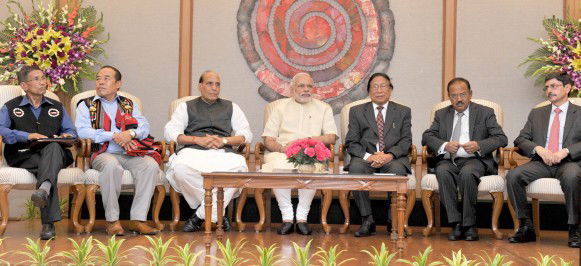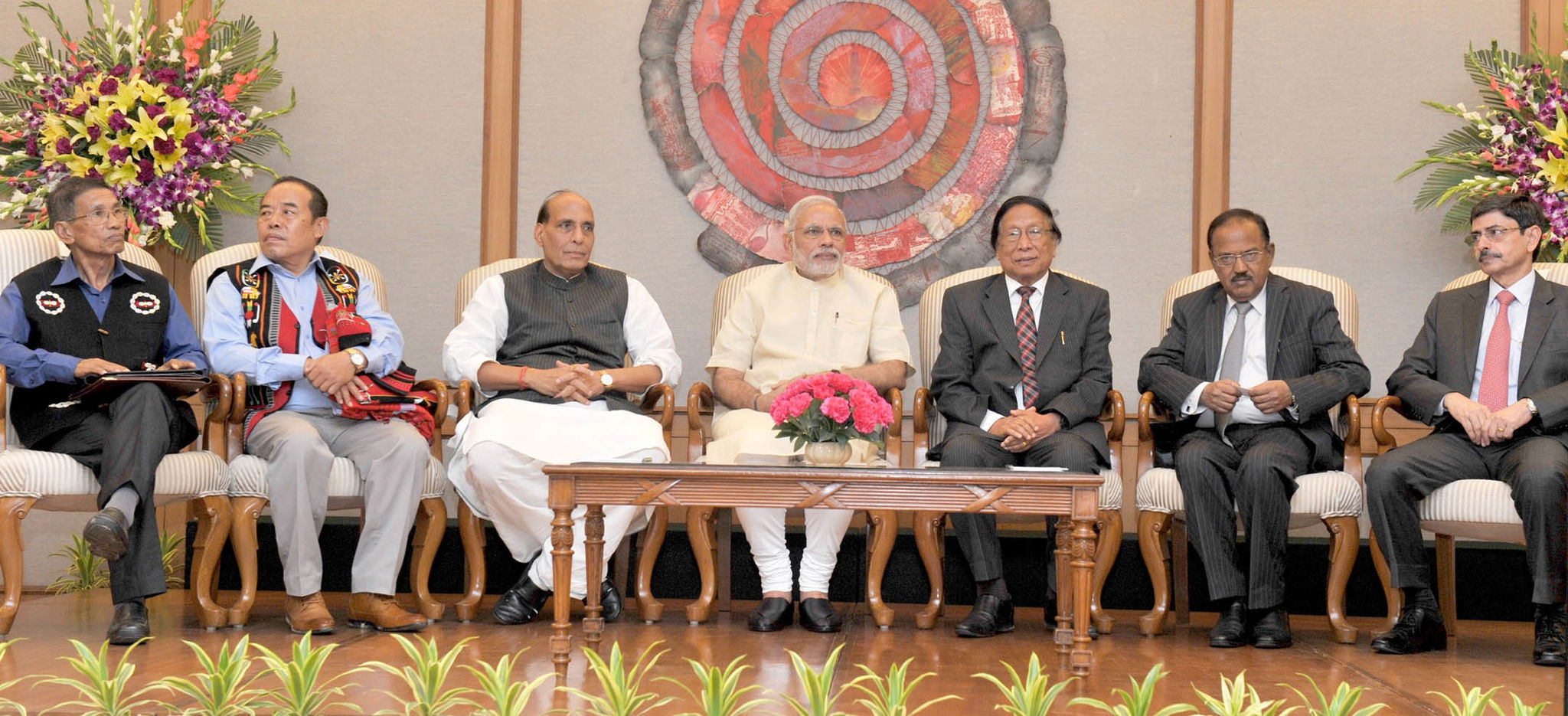Articles features
Naga accord: A test for Modi's policies

Many would argue there is nothing "new" or "historic" in Prime Minister
Narendra Modi's August 3 announcement of the "Naga Peace Accord". Indeed
there is none. The only available media statement said details of the
accord framework and its execution will be released in the days to come.
But
there is something very unique - Modi's way of doing things. His
strategy, execution and, most of all, his ability to read people's minds
and effectively using the media (particularly TV) to his full
advantage. He effortlessly manages to soothe the ego of the leaders of
the NSCN-IM to (almost) perfection - the photo-op, the protocol. With
the whole country glued on to the screen, it was perfect. The Naga
traditional shawl, which Modi consciously did not remove all through the
public show, was a value addition.
The grey dot in the show,
though, would be the pretentious smile of Th. Muivah, general secretary
of the NSCN-IM and a stammering on pronouncing "Narendra Modi". And of
course the absence of the outfit's chairman Isaac Swu, who is undergoing
treatment due to illness.
As usual at his best public speaking,
Modi delivered a diplomatic and impressive speech. There were pointers
in between the lines. He touched upon issues that were core to the
hearts and minds of the Nagas -- their way of life. He talked of the
larger picture of socio-economic development of northeast India and
beyond which made his speech acceptable to all, particularly the
non-Nagas and the general Indian public.
Perhaps due to the long
drawn exhaustive "peace process" between the National Socialist Council
of Nagaland (IM faction) and the Indian government, that has more or
less led to fatigue, the August 3 announcement didn't or rather could
not stir much ripples, unlike other occasion when the peace talk reaches
a certain point, such as in 2001, when Manipur literally burned. In
fact, much as the Naga peace talk had been complex and complicated (the
process is more than 15 years old now, and doesn't seem to be over as
yet); it would be too early to comment.
From the official speech
of Muivah who is the NSCN-IM signatory to the "framework agreement", it
is clear that he is not yet done, an indication that the NSCN-IM
shouldn't be written off so soon. Not directly facing the camera, Muivah
repeated a very similar sentence that has been used since past years
that an honourable peaceful political solution is yet to be worked out.
An attempt to convey a message that "this is not the end".
Though
there is disquiet or no major knee-jerk reactions, be it in Naga areas
or other parts of northeast India, there was curiosity, jitter and
anxiety. The process leading up to the announcement was done in utmost
secrecy where many even within the NSCN-IM, the civil society in
Nagaland and other northeastern states were taken by surprise.
While
the framework agreement - as in terms of taking to a new level -
deserves an applause, it is pertinent to keep in mind the larger public,
specially the Nagas who have the right to be informed about what is
going to affect them. If they are kept in the dark, it would be a grave
mistake on the part of the Naga leadership and New Delhi.
Certainly
there would be negotiations and compromise on various "points" as in
many other peace agreements across the world. All said and done, peace
is not given or taken. It is not something that can be achieved by
signing a document. It comes from the genuine desire of the people, the
key stakeholder, the civil society and the government. As many had
mentioned and re-called the 1986 Mizo Peace accord - in an attempt to
draw parallels and comparisons, it is important to also remember that it
was not the accord per se that brought peace to Mizoram, but the
aftermath of the signing of the accord, wherein the people, the
collective leadership, the civil bodies and government practiced "peace"
in spirit and deed.
As far as the August 3 "historic"
announcement of the Naga accord is concerned, there is no doubt some
progress had been made. The secrecy could be yet another tactic and
strategy by Prime Minister Modi, who is reportedly monitoring the
process since taking power.
A nationalist, Modi's readiness to
solve the issue does not call for any doubt. His larger vision of India
as an emerging leader in South Asia vis-a-vis northeast India cannot be
missed. And it is hoped that all this was done in an attempt to make
progress and development which the northeast region desperately needs.
Modi's understanding of the general picture of northeast India at large
and the Naga psyche is visibly noteworthy.
Nevertheless, for
better or for worse, his tactics and handling of the Naga conflict and
the northeast region will be tested in days to come.
As of now,
the Naga accord is an open-ended matter. We can only hope for better
days, not only for the Nagas but for all the people in the northeast who
are direct or indirect stakeholders of the peace process.
(Ninglun
Hanghal is a Manipur based journalist and commentator. The views
expressed are personal. She can be contacted at
hanghal.ninglun@gmail.coml)




































